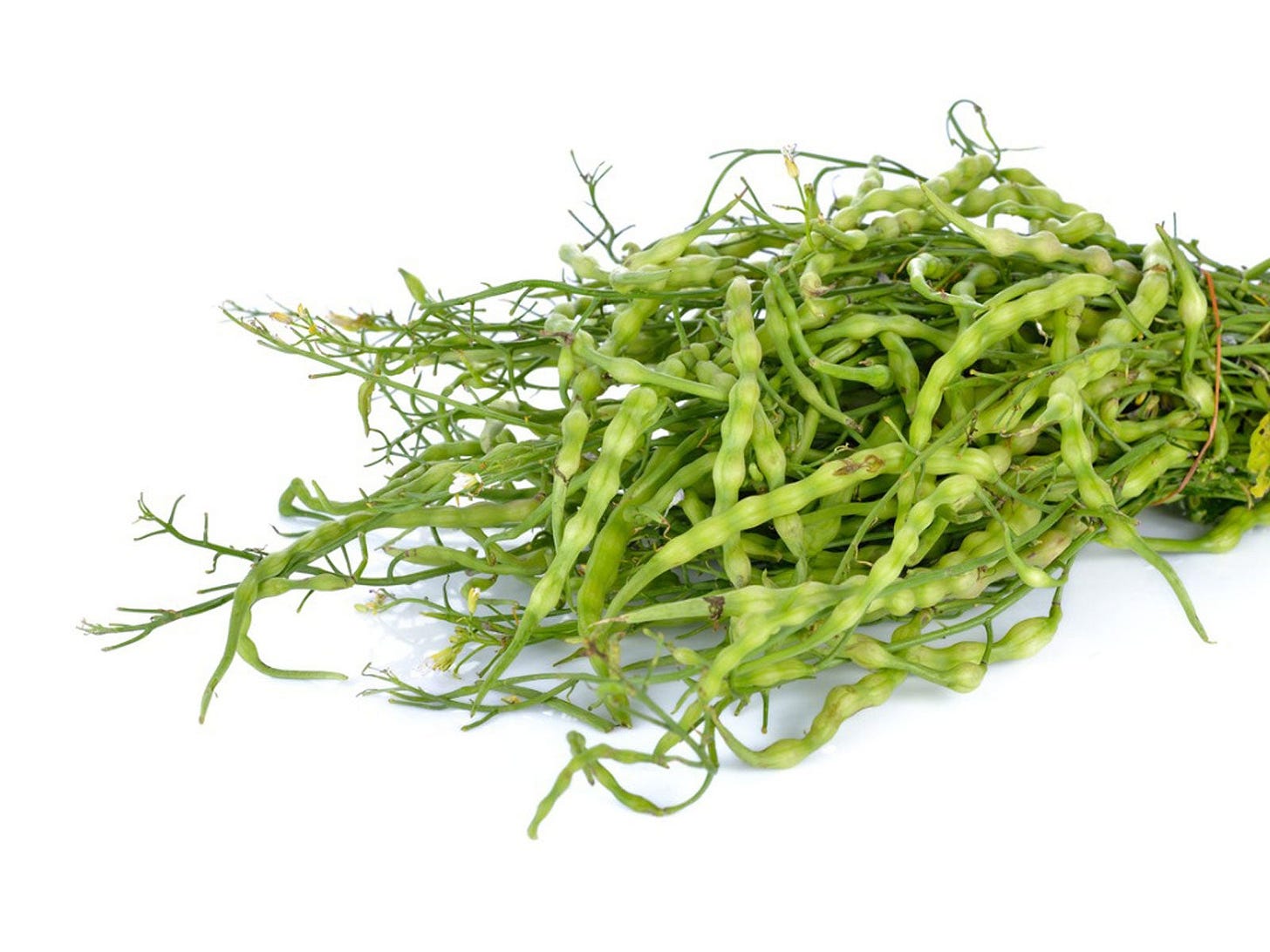ISSUE 91, RADISHES, Part 4: Radish Pod Pickles
Radish Pod Pickles
Gardeners know radishes as quick gratification vegetables. Their roots swell in days, once the plant has sprouted, so the radish vies with the garden pea as the earliest harvest in Spring. In parts of the South market gardeners can fit three separate crops of radish in a year. If you have a green house or tunnel, you can manage four. Yet for the home gardener planting a single crop in a growing season, too often the temptation to pull all the plants out and use the soil for a succession crop of something else triumphs. Yanking them swiftly forfeits one of the pleasures that the radish plant affords: the crispy green seed pod.
In their green state both pods and seeds are edible—no—more than edible—they’re sumptuous. Because some hasty gardeners have never seen the pods, here’s a description from nearly a century ago, when their culinary virtues were more amply appreciated: “Radish seed pods are thick and stocky, with a tapering tip; they have no natural mode of opening at all and release their seeds only when crushed or after they lie on the ground and decay. Atlantic City Press & Sunday Gazette (January 13, 1929), 34. They are a few inches long, fat, an contoured like a compression sock filled with tennis balls. Crafters using dried vegetable matter in constructing scenes have loved the curvy va-va-voom shape. [Jane Cochran, “Pods provide Hobby Items,” Memphis Commercial Appeal (June 12, 1955), 114.]
While radish pods could be eaten fresh in salads, the most popular culinary employment was in composite pickles such as Picalilli. Their crunchy texture stood up against the acids in a pickle pot and held firm when cucumbers had long surrendered to the soft. Of course if one had a large plot of radishes and let them flower and form seed pods, one could do a stand alone pickle. In the United States people descended from North European populations are those most likely to have a family recipe for radish pickle. Here is a 1920 recipe from Idaho.
Caldwell Tribune (August 8, 1920), 8.
There is one word of caution concerning radish seed pods: the drier and warmer the growing conditions, the more fibrous the pod. You want some Spring rain to keep the pods tender.



